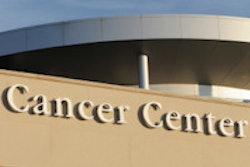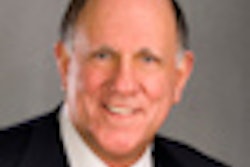
DrBicuspid.com is pleased to present the latest installment of Leaders in Dentistry, a series of interviews with researchers, practitioners, and opinion leaders who are influencing the practice of dentistry.
We spoke with David T.W. Wong, DMD, DMSc, the associate dean of research and a professor of oral biology at the University of California, Los Angeles (UCLA) School of Dentistry; immediate past president of the American Association for Dental Research; and a pioneer in salivary diagnostics.
Dr. Wong's lab has been looking at salivary diagnostics for a wide range of illnesses, including pancreatic and lung cancers and type 2 diabetes, and is involved in a multidisciplinary effort to create a point-of-care device for analyzing the biological markers of disease in saliva. He spoke with DrBicuspid.com about recent advances in the diagnosis and prevention of oral cancer.
DrBicuspid: What is the focus of your current research at UCLA?
 David T.W. Wong, DMD, DMSc, University of California, Los Angeles
David T.W. Wong, DMD, DMSc, University of California, Los Angeles
Dr. Wong: Salivary biomarkers for oral cancer detection. We have developed a panel of highly discriminatory salivary biomarkers for early detection of oral cancer, Sjögren's syndrome, pancreatic cancer, and breast cancer. The concept of systems biology conveys the notion that every part of our body is connected, even though we have not mapped out the circuits and connections yet.
For salivary biomarkers to be useful in a clinical setting, they must be assayed using reference lab technology or point-of-care platforms. Our engineering colleagues can develop these capabilities to enable the clinical utilizations of saliva. The salivary biomarker and biosensor technologies are like hands to a glove: They complement each other and are essential to translate forward salivary diagnostics for real-world applications.
The National Institute of Dental and Craniofacial Research (NIDCR) had the vision and supported the development of both salivary biomarkers and point-of-care technologies. UCLA captured both of these research infrastructure awards, developed the science and technologies, and is now translating them for clinical applications.
What current research are you most excited about?
The use of saliva biomarkers for detection of oral and systemic diseases is the next frontier of diagnostics. The NIDCR invested in this area of research for the past nine years, which has led to the development of scientific bases, tools, and technologies that is poising salivary diagnostics for translational and clinical applications.
The role of dentists to screen for medical conditions based on saliva diagnostics at the chairside is soon to be a clinical reality. The academic prototype for an oral cancer test called the Oral Fluid NanoSensor Test (OFNASET), which was developed with funding from NIDCR, is now ready and will be manufacturable in six months. The next stage will require industrial/commercial investment, including regulatory approval.
Where do you think we will see the next big breakthrough for oral cancer -- in treatment or prevention?
Probably more on the prevention side, as effective early detection technology will soon emerge as clinical products, particularly saliva-based early detection technology.
You have discussed creating disease profiles for various diseases such as oral cancer and Sjögren's syndrome. Where are you now in terms of which diseases you're trying to profile and the status of such profiles?
The development of the science and technologies -- including diagnostic alphabets in saliva -- fully enable oral and systemic diseases to be detected. We have developed five diagnostic alphabets in saliva for disease detection (proteome, transcriptome, micro-RNA, metabolome, and microbiome). Every oral and systemic disease that we have developed biomarkers for has produced disease signatures and fingerprints based on saliva biomarkers. These diseases include oral cancer, Sjögren's syndrome, pancreatic cancer, breast cancer, lung cancer, gastric cancer, and diabetes.
What is the greatest challenge in successfully treating oral and head/neck cancers?
Early detection is the key. Had Michael Douglas' stage IV oral cancer been detected at stage I, his five-year survival would improve 60%, in addition to an immense improvement in quality of life and significant reduction in healthcare costs.
Should human papillomavirus (HPV) vaccines be recommended for everyone, not just young girls?
My understanding is that the FDA is moving toward recommending vaccination for both boys and girls. As for older individuals, there is a cutoff somewhere in the early 20s, the argument being that the majority of the population will have been exposed to HPV by that age, thus decreasing the overall health benefit.
What more can be done to prevent oral cancer besides encouraging people to quit smoking or drink less alcohol?
Dentists should do an oral cancer exam during routine oral health visits.
What impact do you think your research will have on dentistry as a profession?
Dentistry should be a scientifically driven profession. What we do in dentistry can have value and impact for our profession and beyond. The clinical maturation of salivary diagnostics will change the landscape of dentistry, permitting the chairside screening of oral and systemic medical conditions. This can transform dentistry into the front line of primary healthcare. Because more Americans see their dentist more regularly than their physician, the differential can present significant opportunities for dentists to screen and early detect life-threatening diseases, and then provide medical referrals for the appropriate intervention.



















